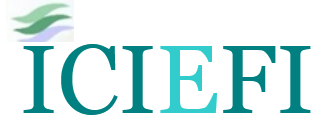Asymmetric Impact of Oil Prices and Stock Prices on Bank’s Profitability: Evidence from Saudi Islamic Banks
Abstract
The soundness of financial institutions including banks depends on both internal factors and external factors. The profitability of the banks largely affected by external shocks like oil prices and stock prices. As an oil-exporting country, Saudi economy particularly its banking sector largely rely on the oil prices. This study examines the asymmetric impact of oil prices and stock prices on Saudi Islamic banks’ profitability for the period 2000-2020. Two Saudi Islamic banks’ profitability is examined by the factors like Return on Equity (ROE) and Return on Assets (ROA) with the help of a nonlinear autoregressive distributed lag (NARDL) model. The estimated results are observed to be unbiased and robust. The results of this study show that OILP and STOCKP have significant role in determining the Islamic banks’ profitability in Saudi Arabia. Both higher oil prices and stock prices have positive influence on ROE and ROA of Saudi Islamic banks. This study suggest that development and efficiency of Saudi stock market is important and macroeconomic policy should support the country’s economic diversification. The management of Islamic banks need to focus on effective risk assessment and market monitoring tools to face the fluctuation of oil prices and their stock prices as these factors affect their profitability. Besides, Saudi Islamic banks need to diversify their investment portfolios into more productive and export oriented private sectors such as Small Medium Enterprises (SMEs). This strategic policy will enable Islamic banks to absorb any future shock of oil prices without affecting their profitability.
Keywords
Full Text:
PDFReferences
Alaagam, A. (2019). The relationship between profitability and stock prices: Evidence from the Saudi Banking Sector. Research Journal of Finance Accounting, 10, 91-101.
Albertazzi, U., & Gambacorta, L. (2009). Bank profitability and the business cycle. Journal of financial stability, 5(4), 393-409. doi:10.1016/j.jfs.2008.10.002
Albertazzi, U., & Gambacorta, L. (2009). Bank profitability and the business cycle Journal of Financial Stability, 5(5), 393-409.
Alkhareif, R. J. F. R. L. (2016). Are there significant premiums in the Saudi stock market? , 18, 108-115.
Allen, F., & Gale, D. J. J. o. f. i. (1999). Diversity of opinion and financing of new technologies. 8(1-2), 68-89.
Anwar, M., & Herwany, A. (2006). The determinants of successful bank profitability in Indonesia: empirical study for provincial government’s banks and private non-foreign banks. Retrieved from http://ssrn.com/abstract=1670707
Arora, H., & Arora, P. (2013). Effect of investments in information technology on bank performance: empirical evidence from Indian public sector banks. International Journal of Business Information Systems, 13(4), 400-417.
Athanasoglou, P. P., Brissimis, S. N., & Delis, M. D. (2008). Bank-specific, industry-specific and macroeconomic determinants of bank profitability. Journal of international financial markets, institutions & money, 18(2), 121-136. doi:10.1016/j.intfin.2006.07.001
Beck, T., Demirgüç-Kunt, A., & Levine, R. (1999). A new database on financial development and structure [e-book]. Retrived from https://elibrary.worldbank.org/doi/pdf/10.1596/1813-9450-2146.
Beck, T., Demirgüç-Kunt, A., & Merrouche, O. (2010). Islamic vs. conventional banking: Business model, efficiency and stability [e-book]. Retrived from https://elibrary.worldbank.org/doi/abs/10.1596/1813-9450-5446.
Beckmann, R. (2007). Profitability of Western European banking systems: Panel evidence on structural and cyclical determinants. SSRN Electronic Journal. doi:10.2139/ssrn.1090570.
Ben Ameur, I., & Mhiri, S. (2013). Explanatory factors of bank performance evidence from Tunisia. International Journal of Economics, Finance and Management, 2(1), 1-11.
Ben Naceur, S., & Omran, M. (2011). The effects of bank regulations, competition, and financial reforms on banks’ performance. Emerging Markets Review, 12(1), 1-20.
Broock, W. A., Scheinkman, J. A., Dechert, W. D., & LeBaron, B. (1996). A test for independence based on the correlation dimension. Econometric reviews, 15(3), 197-235. doi:10.1080/07474939608800353
Davydenko, A. (2011). Determinants of bank profitability in Ukraine. Undergraduate Economic Review, 7(1), 1-30. .
Demirgüç-Kunt, A., & Huizinga, H. (1999). Determinants of commercial bank interest margins and profitability: some international evidence. The World Bank Economic Review, 13(2), 379-408.
Dickey, D. A., & Fuller, W. A. (1979). Distribution of the estimators for autoregressive time series with a unit root. Journal of the American Statistical Association, 74(366), 427. doi:10.2307/2286348
Dietrich, A., & Wanzenried, G. (2014a). The determinants of commercial banking profitability in low-, middle-, and high-income countries. Q. Rev. Econ. Finance, 54, 337-354.
Dietrich, A., & Wanzenried, G. (2014b). The determinants of commercial banking profitability in low-, middle-, and high-income countries. The Quarterly review of economics and finance, 54(3), 337-354. doi:10.1016/j.qref.2014.03.001
Eichengreen, B., & Gibson, H. D. (2001). Greek banking at the dawn of the new millennium. In Discussion Paper 2791. London: CEPR.
Essayyad, M., & Madani, H. (2003). Investigating bank structure of an open petroleum economy: The case of Saudi Arabia. Managerial Finance.
Fitchratings. (2021). Saudi Islamic Banks: 2020 Results Dashboard. Retrieved from https://www.fitchratings.com/research/islamic-finance/saudi-islamic-banks-2020-results-dashboard-30-03-2021,
Flamini, V., McDonald, C., & Schumacher, L. (2009). The determinants of commercial bank profitability in sub-Saharan Africa. Retrieved from http://dx.doi.org/10.5089/9781451871623.00
Gulati, R., & Kumar, S. (2016). Assessing the impact of the global financial crisis on the profit efficiency of Indian banks. Economic modelling, 58, 167-181. doi:10.1016/j.econmod.2016.05.029
Habibullah, M. S., & Eng, Y.-K. (2006). Does financial development cause economic growth? A panel data dynamic analysis for the Asian developing countries. Journal of the Asia Pacific Economy, 11(4), 377-393.
Hassan, M., Amin, M. F. B., Khokhar, I., & Khan, M. N. (2020). Examining the Comparative Efficiency of GCC Islamic Banking. Journal of Islamic Banking & Finance, 37(4), 9-32.
Hassan, M., Khan, M. N., Amin, M. F. B., & Khokhar, I. (2018). Measuring the Performance of Islamic Banks in Saudi Arabia. International Journal of Economics Management, 12(1).
Hassan, M. A., Hafsa, N., & Muhammad, I. (2011). Islamic banking insulation against US credit crisis. International Journal of Business Social Science, 2(10), 193-205.
Hassan, M. K., & Bashir, A. H. M. (2003). Determinants of Islamic banking profitability. Paper presented at the 10th ERF annual conference, Morocco.
Hesse, H., & Poghosyan, T. (2009). Oil Prices and bank performance: Evidence from major oil-exporting countries in the Middle East and North Africa. Retrieved from https://www.imf.org/en/Publications/WP/Issues/2016/12/31/Oil-Prices-and-Bank-Profitability-Evidence-From-Major-Oil-Exporting-Countries-in-the-Middle-23337
Kaya, T. Y. (2002). Determinants of profitability in Turkish banking sector. Retrieved from http://www.bddk.org.tr/websitesi/English.aspx
Khan, M. N., Amin, M. F. B., Khokhar, I., Hassan, M., & Ahmad, K. (2018). Efficiency measurement of islamic and conventional banks in Saudi Arabia: an Empirical and comparative analysis. Al-Shajarah: Journal of the International Institute of Islamic Thought(Special), 111-134.
Khokhar, I., Hassan, M., Khan, M. N., & Amin, M. F. B. (2020). Investigating the efficiency of GCC banking sector: An empirical comparison of islamic and conventional banks. International Journal of Financial Research, 11(1).
King, R. G., & Levine, R. (1993). Finance and growth: Schumpeter might be right. The quarterly journal of economics, 108(3), 717-737.
Kosmidou, K. (2008). The determinants of banks' profits in Greece during the period of EU financial integration. Managerial Finance. 34(3). 146-159.
Kpodar, K., & Imam, P. A. (2010). Islamic banking: how has it diffused?. IMF Working Paper.
Lee, C., & Hsieh, M. (2013). The impact of bank capital on profitability and risk in Asian banking. Journal of international money and finance, 32, 251-281. doi:10.1016/j.jimonfin.2012.04.013
Levine, R., & Zervos, S. J. A. e. r. (1998). Stock markets, banks, and economic growth. The American Economic Review, 88(3). 537-558.
Muhamad, M., Amir, S., & Abdelhakim, E. (2013). Comparative analysis of profitability determinants of domestic and foreign islamic banks in Malaysia. International journal of economics and financial issues, 3(3), 559-569.
Naceur, S. B., & Goaied, M. (2008). The determinants of commercial bank interest margin and profitability: Evidence from Tunisia. Frontiers in Finance Economics, 5(1), 106-130.
Perron, P. (1989). The Great crash, the oil price shock, and the unit root hypothesis. Econometrica, 57(6), 1361-1401. doi:10.2307/1913712
Pesaran, M. H., Shin, Y., & Smith, R. J. (2001). Bounds testing approaches to the analysis of level relationships. 16(3), 289-326. doi:https://doi.org/10.1002/jae.616
Pesaran, M. H., Shin, Y., & Smith, R. P. (1999). Pooled mean group estimation of dynamic heterogeneous panels. Journal of the American statistical Association, 94(446), 621-634.
Priscilla, I. C., & Ezeanyeji, C. I. (2019). Financial development and economic growth nexus in Nigeria. International Journal of Business Management Invention, 8(3), 50-63.
Rivard, R. J., & Thomas, C. R. (1997). The effect of interstate banking on large bank holding company profitability and risk. Journal of Economics Business, 49(1), 61-76.
Rosly, S. A., & Bakar, M. A. (2003). Performance of Islamic and mainstream banks in Malaysia. International Journal of Social Economics. 30(12). 1249-1265. DOI 10.1108/03068290310500652
Rossi, S., Borroni, M., Lippi, A., & Piva, M. (2018). Determinants of Bank Profitability in the Euro Area: What Has Changed During the Recent Financial Crisis? International business research (Toronto), 11(5), 18. doi:10.5539/ibr.v11n5p18
Sharma, E., & Mani, M. (2012). Impact of macroeconomic and financial market indicators on the banking sector: Some evidence from India. International Journal of Research in Finance Marketing, 2(2), 171-185.
Sharma, P., Gounder, N., & Xiang, D. (2013). Foreign banks, profits, market power and efficiency in PICs: some evidence from Fiji. Appl. Financ. Econ., 23.
Shin, Y., Yu, B., & Greenwood-Nimmo, M. (2011). Modelling Asymmetric Cointegration and Dynamic Multiplier in a Nonlinear ARDL Framework,. Mimeo.
Shin, Y., Yu, B., & Greenwood-Nimmo, M. (2014). Modelling asymmetric cointegration and dynamic multipliers in a nonlinear ARDL framework. In Festschrift in honor of Peter Schmidt (pp. 281-314): Springer.
Staikouras, C. K., & Wood, G. E. (2004). The determinants of European bank profitability. International Business Economics Research Journal, 3(6).
General Autority of Statistics. (2020). Retrieved from https://www.stats.gov.sa/en
Sufian, F. (2009). Factors influencing bank profitability in a developing economy: Empirical Evidence from Malaysia. Global Business Review, 10(2), 225–241.
Sufian, F., & Habibullah, M. S. (2010). Assessing the impact of financial crisis on bank performance: Empirical evidence from Indonesia. ASEAN Economic Bulletin, 245-262.
Suhad, A., & Tahar, T. (2021). Determinants of financing in emerging markets in Saudi Arabia. PalArch's Journal of Archaeology of Egypt / Egyptology, 18(13), 1130-1136.
Tan, Y., & Floros, C. (2012). Bank profitability and GDP growth in China: a note. Journal of Chinese Economic and Business Studies. 10(3). 267-273, DOI: 10.1080/14765284.2012.703541
Tlemsani, I., & Al Suwaidi, H. (2016). Comparative analysis of Islamic and conventional banks in the UAE during the financial crisis. Asian Economic and Financial Review, 6(6), 298.
Tzeremes, N. G. (2015). Efficiency dynamics in Indian banking: A conditional directional distance approach. European journal of operational research, 240(3), 807-818. doi:10.1016/j.ejor.2014.07.029
Yanikkaya, H., Gumus, N., & Pabuccu, Y. (2018). How profitability differs between conventional and Islamic banks: A dynamic panel data approach. Pacific-Basin Finance Journal, 48, 99-111.
Zantioti, L. E. (2009). Does Islamic bank performance differ by region. Unpublished Master’s Thesis, Stockholm School of Economics, Sweden.
Zeitun, R. (2012). Determinants of Islamic and Conventional Banks performance in GCC countries using panel data analysis. Global Economy and Finance Journal, 5(1), 53-72.
Zivot, E., & Andrews, D. W. K. (1992). Further evidence on the great crash, the oil-price shock, and the unit-root hypothesis. Journal of business & economic statistics, 10(3), 251-270. doi:10.1080/07350015.1992.10509904
DOI: https://doi.org/10.18196/ijief.v5i1.11835
Refbacks
- There are currently no refbacks.
Copyright (c) 2022 International Journal of Islamic Economics and Finance (IJIEF)

This work is licensed under a Creative Commons Attribution-ShareAlike 4.0 International License.
International Journal of Islamic Economics and Finance (IJIEF)
International Program for Islamic Economics and Finance
Department of Economics
Faculty of Economics and Business
Universitas Muhammadiyah Yogyakarta
Pascasarjana Building, Ground Floor
Jl. Brawijaya (Ringroad Selatan), Kasihan, Bantul
D.I. Yogyakarta 55183, INDONESIA
Official email: ijief@umy.ac.id












1.jpg)